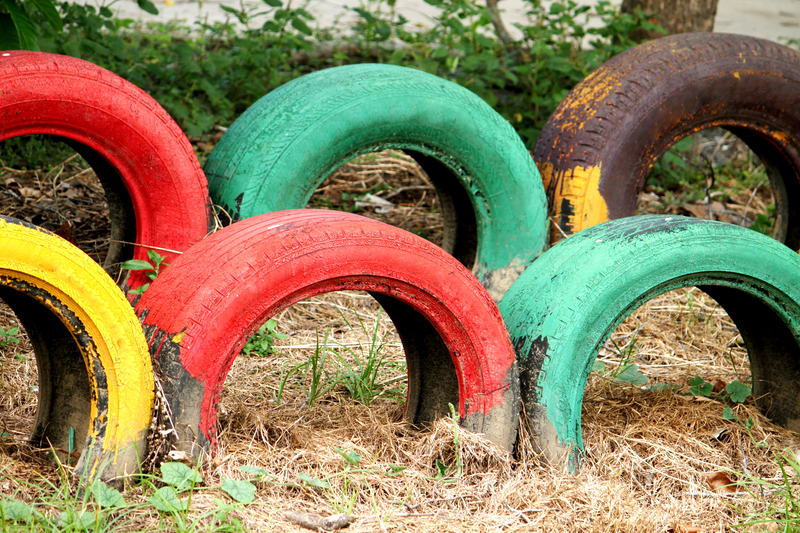Your Guide to Safe and Sustainable PPE Waste Management
The COVID-19 pandemic thrust Personal Protective Equipment (PPE) into the global spotlight, highlighting its critical role in public health and workplace safety. With global use soaring, the challenge of sustainable PPE waste management has never been more urgent. Disposing of masks, gloves, gowns, and other protective supplies safely, while minimizing environmental harm, calls for informed, innovative, and effective strategies. This comprehensive guide explores essential practices, government regulations, eco-friendly solutions, and the latest technologies to help individuals, businesses, and institutions approach PPE waste management in the safest and most sustainable way possible.

Understanding PPE Waste and Its Environmental Impact
PPE waste encompasses any discarded materials originally used for personal protection--from single-use medical masks and gloves to disposable gowns and face shields. The spike in PPE consumption during recent health crises has led to a corresponding increase in plastic waste, much of which ends up in landfills, water bodies, or incinerators.
- Plastic Pollution: Most single-use PPE items are made from synthetic polymers like polypropylene or polyvinyl chloride, which can take hundreds of years to decompose.
- Marine Contamination: Improperly disposed PPE can clog waterways, break down into microplastics, and threaten aquatic life.
- Hazardous Waste: Used PPE may carry infectious agents, posing health risks to waste handlers and the general public if not properly managed.
Why Sustainable PPE Disposal Matters
Safe and sustainable PPE waste management is crucial for protecting both human health and the environment. When PPE is disposed of carelessly, it can undermine public health efforts, escalate pollution, and increase the risk of disease transmission. Adopting eco-friendly PPE waste solutions ensures safety while contributing to a greener, cleaner planet.
Types of PPE Waste and Sorting Methods
Understanding the different types of personal protective equipment and how to sort them is the first step towards effective PPE disposal.
Commonly Disposed PPE Materials
- Face Masks: Surgical masks, respirators, and cloth masks are widely used in healthcare, workplaces, and public settings.
- Gloves: Includes latex, nitrile, and vinyl gloves used across medical, laboratory, and industrial sectors.
- Gowns and Aprons: Disposable protective clothing worn chiefly by medical personnel.
- Eye and Face Protection: Includes visors, goggles, and face shields, often made of plastics.
- Shoe Covers, Caps, and Other Accessories: Ancillary PPE commonly used in healthcare or cleanroom environments.
Sorting Your PPE Waste
-
Segregate by Contamination:
- Non-infectious PPE (e.g., used outside medical settings) can sometimes be processed as general waste or considered for recycling.
- Infectious PPE (from hospitals, labs, or quarantine facilities) must be treated as biomedical or hazardous waste.
- Identify Material Types: Sorting by type--plastics, textiles, metals--aids in recycling and proper disposal.
Best Practices for Safe PPE Waste Handling
1. Collection & Containment
- Use Clearly Marked Bins: Dedicated PPE bins, color-coded or clearly labeled, minimize confusion and cross-contamination.
- Sealable Bags or Containers: Especially for infectious waste, seal all PPE in leak-proof bags prior to disposal.
- Personal Protection for Handlers: Waste collection staff should always use appropriate PPE themselves to reduce exposure risks.
2. Storage & Transport
- Temporary Storage: Store filled PPE bins in secure, ventilated areas away from public access.
- Safe Transport: Use dedicated trolleys or carts for moving PPE waste, and avoid overfilling bins to prevent accidental spills.
3. Disposal Techniques
- Autoclaving: A preferred method for sterilizing infectious PPE before further processing.
- Incineration: Appropriate for some biomedical waste, though emissions control is critical to minimize air pollution.
- Landfill Disposal: As a last resort, ensure PPE is contained in sealed bags to reduce environmental exposure.
Sustainable Solutions: Eco-Friendly PPE Waste Management
Tackling the environmental toll of discarded PPE requires creative, sustainable waste solutions that go beyond traditional disposal.
Recycling Innovations
- Mechanical Recycling: Some PPE items, particularly those made from polypropylene (like certain masks), can be shredded, sterilized, and converted into new products such as construction materials or furniture.
- Chemical Recycling: Advanced technologies can break plastics back down to monomers, which are then reused to manufacture new plastics.
- Energy Recovery: Modern waste-to-energy plants can safely convert PPE waste into usable power by incineration, provided emissions are tightly controlled.
Biodegradable Alternatives
- Compostable PPE: Emerging materials, including bioplastics and plant-based fibers, are driving the move towards disposable PPE items that can biodegrade under the right conditions.
- Reusable PPE: Where suitable, the use of washable, reusable masks and gowns reduces reliance on single-use products and cuts down waste volumes.
Take-Back and Collection Programs
- Manufacturer-Led Recyclables: Some PPE manufacturers have introduced PPE take-back programs or mail-back recycling schemes to ensure responsible end-of-life processing.
- Community Drop-off Points: Public collection bins at pharmacies, clinics, or shopping centers can centralize the collection of used PPE for safe disposal or recycling.
Complying with PPE Waste Management Regulations
Waste management compliance is both a legal and ethical imperative. Communities, industries, and healthcare facilities must adhere to local, state, and federal rules for infectious and plastic waste.
- OSHA and CDC Guidelines: In the United States, organizations must follow Occupational Safety and Health Administration (OSHA) and Centers for Disease Control and Prevention (CDC) standards for handling potential biohazards.
- EPA Regulations: The Environmental Protection Agency (EPA) provides specific guidance for managing medical and plastic wastes.
- International Frameworks: The Basel Convention guides the global movement and disposal of hazardous wastes, including PPE.
Always stay up to date with regulations--failure to comply can result in heavy fines and increased risks to public safety.
Innovations and Technology in PPE Waste Processing
1. Advanced Sterilization
- Ozone and UV Treatment: These methods can rapidly disinfect used PPE, enabling safer handling and even repurposing for non-critical applications.
2. Smart Bins and IoT
- Sensor-Enabled Waste Bins: Smart bins equipped with IoT sensors monitor waste levels and ensure timely collection, reducing the risk of overflows and mishandling.
3. Upcycling Initiatives
- Creative Reuse: Some organizations upcycle sterilized PPE into new construction materials or textiles, transforming waste into valuable resources.
Practical Tips for Individuals and Organizations
For Individuals
- Avoid Littering: Never discard masks, gloves, or face shields in public places--use designated bins or bring PPE home for proper disposal.
- Opt for Reusable PPE: When possible, choose washable and reusable cloth masks or protective clothing to dramatically reduce waste.
- Stay Informed: Know your community's guidelines on PPE waste and participate in recycling or take-back initiatives.
For Businesses and Institutions
- Establish a PPE Waste Policy: Develop a clear protocol for collection, segregation, storage, and disposal of PPE waste.
- Train Staff: Regular training ensures that employees understand and follow safety practices for handling and disposing of PPE.
- Partner with Certified Waste Managers: Work with licensed waste management companies to guarantee safe processing and disposal.
- Explore Green Alternatives: Source sustainable, recyclable, or compostable PPE to reduce your organization's ecological footprint.

The Future of PPE Waste Management
The global response to PPE pollution has spurred a wave of innovation and policy reform. Expect further advances in biomaterials, regulatory frameworks, and community engagement--plus a cultural shift towards sustainability as part of infection control.
- Research and Development: Ongoing R&D is yielding better biodegradable PPEs and scalable recycling technologies.
- Public Awareness: Sharing knowledge about proper PPE disposal and environmental impacts fosters more responsible behavior.
Conclusion: Make a Difference With Safe, Sustainable PPE Waste Management
The journey toward safe and sustainable PPE waste management begins with each of us--at home, at work, and in our communities. By understanding best practices, investing in new technologies, complying with regulations, and choosing eco-friendly alternatives, we all play a vital role in reducing PPE pollution and building a healthier planet. Sustainably managing PPE waste isn't just a public health priority--it's a long-term commitment to environmental stewardship.
Act now. Opt for sustainable PPE, practice safe disposal, and support innovation in medical and environmental waste solutions. Together, we can keep people and the planet safe.
